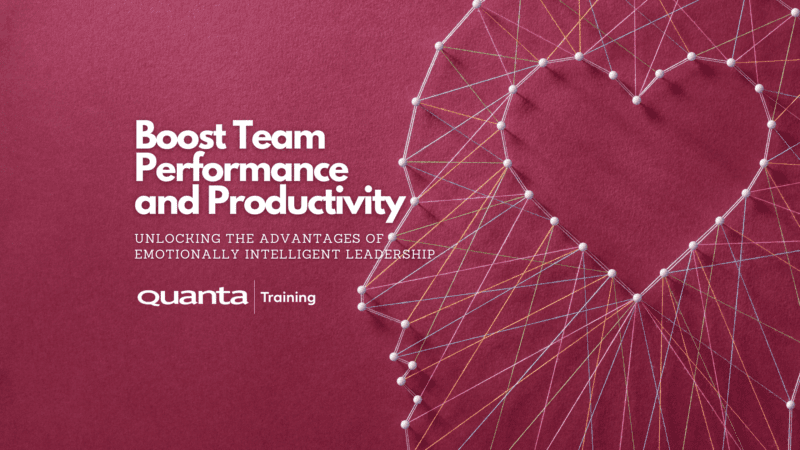The new PRINCE2 7 is here! Best practice made better.
PRINCE2 7 is the latest update of the best practice framework for Project Management from AXELOS. This course will guide you through the latest update to the methodology including both the foundation & practitioner exams.Book Your Course
Start Date
Venue
Availability
Cost
Course confirmed - Guaranteed to run
Course Full/Limited availability
Price shown excluding VAT.
Book a Private Event
If you require the content of this event tailored or have around 7 or more people to train it maybe better for you to host a Private Event, please get in touch to discuss this.
Get in touchDescription
Who is this course for
The course will benefit project managers, team managers/leaders, project and quality assurance or support staff who wish to gain the Practitioner qualification in PRINCE2. It is also suitable for those wishing to gain a formal qualification after a couple of years of project management experience
Purpose of the course
The course thoroughly explains the PRINCE2 7 project management method and language. It will teach you how to tailor this methodology to suit your working environment and control your projects, regardless of size as PRINCE2 is fully scalable, bringing them in on time, within budget and quality requirements.
You will learn how to
- To become familiar with an industry standard project management methodology
- To gain exposure to the practices, people aspects, processes, and principles of PRINCE 2 7
- To be prepared for the foundation and practitioner examinations
Prerequisites
You should ideally have some experience of working with or as part of a project team, as well as a basic understanding of project management tools and techniques, such as those covered within our PFQ and PMQ courses.Benefits for you as an individual
The course prepares you for the PRINCE2 7 Foundation and Practitioner exams; these qualifications are widely recognised in all industry sectors. Attendees will understand the process advocated by the latest iteration of the PRINCE2 method and the use of the included document templates.
Benefits for your organisation
Attendees should gain a good appreciation of the advantages to using a structured method such as PRINCE2. They will learn the distinct roles involved in a project management team and their individual responsibilities. They will learn how to proactively manage risk, change, progress, business case, plans and quality considerations, as well as understanding the minimum requirements of a PRINCE2 project in order to tailor it appropriately to suit their needs.
Foundation content
Understand key concepts relating to projects and PRINCE2®
- Recall key concepts relating to projects and PRINCE2®
- Describe key concepts related to project management
Understand how the PRINCE2® principles underpin the PRINCE2® method
- Explain the PRINCE2® principles
- Explain how and why the principles provide the basis of applying PRINCE2®, and which factors influence the way the PRINCE2® method can be tailored and applied, who is responsible, and how tailoring decisions are documented.
Understand the importance of people in successful projects
- Define key concepts related to the people element
- Explain the difference between concepts related to the people element
- Explain key concepts related to the people element
- Explain the purpose of the management products required to support the people element of projects
- Explain how people aspects integrate with other PRINCE2® elements.
Understand the PRINCE2® practices and how they are applied throughout the project
- Explain the purpose of PRINCE2® management products
- Explain the purpose of the ‘business case’ practice
- Describe the key relationships between the ‘business case’ practice and the principles
- Explain the purpose of the key management products required to support the ‘business case’ practice
- Define key concepts related to the ‘business case’ practice
- Describe the guidance for effective management of the business case
- Describe the PRINCE2® technique for the ‘business case’ practice
- Explain the purpose of the ‘organising’ practice.
- Describe the key relationships between the ‘organising’ practice and the principles.
- Explain the purpose of the key management products required to support the ‘organisation’ practice
- Define key concepts related to the ‘organising’ practice
- Describe the guidance for effective organising of
- Describe the PRINCE2® technique for the ‘organising’ practice
- Explain the purpose of the ‘plans’ practice
- Describe the key relationships between the ‘plans’ practice and the principles
- Explain the purpose of the key management products required to support the ‘plans’ practice
- Define key concepts related to the ‘plans’ practice
- Describe the guidance for effective management of plans
- Describe the PRINCE2® technique for the ‘plans’ practice
- Explain the purpose of the ‘quality’ practice.
- Describe the key relationships between the ‘quality’ practice and the principles.
- Explain the purpose of the key management products required to support the ‘quality’ practice
- Define key concepts related to the ‘quality’ practice
- Describe the guidance for effective management of quality
- Describe the PRINCE2® technique for the ‘quality’ practice
- The purpose of the ‘risk’ practice
- Describe the key relationships between the ‘risk’ practice and the principles
- Explain the purpose of the key management products required to support the ‘risk’ practice
- Define key concepts related to the ‘risk’ practice
- Describe the guidance for effective management of risk
- Describe the PRINCE2® technique for the ‘risk’ practice
- Explain the purpose of the ‘issues’ practice
- Describe the key relationships between the ‘issues’ practice and the principles
- Explain the purpose of the key management products required to support the ‘issues’ practice
- Define key concepts related to the ‘issues’ practice
- Describe the guidance for effective management of issues
- Describe the PRINCE2® technique for the ‘issues’ practice
- Explain the purpose of the ‘progress’ practice.
- Describe the key relationships between the ‘progress’ practice and the principles
- Explain the purpose of the key management products required to support the ‘progress’ practice
- Define key concepts related to the ‘progress’ practice
- Describe the guidance for effective management of progress
- Describe the PRINCE2® technique for the ‘progress’ practice
Understand the PRINCE2® processes and how they are carried throughout the project
- Explain the purpose of the PRINCE2® processes
- Explain the objectives of the PRINCE2® processes
- Explain the context of the PRINCE2® processes
Understand how to apply the PRINCE2® principles in context
- Analyse the application of PRINCE2® principles in context
Understand how to apply effective people management in successful projects
- Assess whether an approach to leadership and management of teams is appropriate
- Assess whether an approach to leadership and management of change within a project, and people affected by a project, is appropriate.
- Apply the approach to communications and people central to the method
- Apply the key management products required to support the people element of projects
Understand how to apply and tailor relevant aspects of PRINCE2® practices in context
- Apply the PRINCE2® ‘business case’ practice
- Analyse whether an approach to applying the ‘business case’ practice is effective and fit for purpose, taking into consideration: the PRINCE2® principles, and the effective management and associated techniques of the practice, and tailoring to the project’s environment/context
- Apply the PRINCE2® ‘organising’ practice
- Analyse whether an approach to applying the ‘organising’ practice is effective and fit for purpose, taking into consideration: the PRINCE2® principles, and the effective management and associated techniques of the practice, and tailoring to the project’s environment/context.
- Apply the PRINCE2® ‘plans’ practice
- Analyse whether an approach to applying the ‘plans’ practice is effective and fit for purpose, taking into consideration: the PRINCE2® principles, and the effective management and associated techniques of the practice, and tailoring to the project’s environment/context
- Apply the PRINCE2® ‘quality’ practice
- Analyse whether an approach to applying the ‘quality’ practice is effective and fit for purpose, taking into consideration: the PRINCE2® principles, and the effective management and associated techniques of the practice, and tailoring to the project’s environment/context
- Apply the PRINCE2® ‘risk’ practice
- Analyse whether an approach to applying the ‘risk’ practice is effective and fit for purpose, taking into consideration: the PRINCE2® principles, and the effective management and associated techniques of the practice, and tailoring to the project’s environment/context
- Apply the PRINCE2® ‘issues’ practice
- Analyse whether an approach to applying the ‘issues’ practice is effective and fit for purpose, taking into consideration: the PRINCE2® principles, and the effective management and associated techniques of the practice, and tailoring to the project’s environment/context
- Apply the PRINCE2® ‘progress’ practice
- Analyse whether an approach to applying the ‘progress’ practice is effective and fit for purpose, taking into consideration: the PRINCE2® principles, and the effective management and associated techniques of the practice, and tailoring to the project’s environment/context
Understand how to apply (and tailor) relevant aspects of PRINCE2® processes in context.
- Carry out the ‘starting up a project’ process,
- Analyse whether the ‘starting up a project’ process activities, roles and responsibilities are effective and fit for purpose, taking into consideration: tailoring to the project’s environment/context, the PRINCE2® practices, and the purpose and objectives of the process
- Carry out the ‘directing a project’ process
- Analyse whether the ‘directing a project’ process activities, roles and responsibilities are effective and fit for purpose, taking into consideration: tailoring to the project’s environment/context, the PRINCE2® practices, and the purpose and objectives of the process.
- Carry out the ‘initiating a project’ process
- Analyse whether the ‘initiating a project’ process activities, roles and responsibilities are effective and fit for purpose, taking into consideration: tailoring to the project’s environment/context, the PRINCE2® practices, and the purpose and objectives of the process
- Carry out the ‘controlling a stage’ process
- Analyse whether the ‘controlling a stage’ process activities, roles and responsibilities are effective and fit for purpose, taking into consideration: tailoring to the project’s environment/context, the PRINCE2® practices, and the purpose and objectives of the process
- Carry out the ‘managing product delivery’ process
- Analyse whether the ‘managing product delivery’ process activities, roles and responsibilities are effective and fit for purpose, taking into consideration: tailoring to the project’s environment/context, the PRINCE2® practices, and the purpose and objectives of the process
- Carry out the ‘managing a stage boundary’ process
- Analyse whether the ‘managing a stage boundary’ process activities, roles and responsibilities are effective and fit for purpose, taking into consideration: tailoring to the project’s environment/context, the PRINCE2® practices, and the purpose and objectives of the process.
- Carry out the ‘closing a project’ process
- Analyse whether the ‘closing a project’ process activities, roles and responsibilities are effective and fit for purpose, taking into consideration: tailoring to the project’s environment/context, the PRINCE2® practices, and the purpose and objectives of the process.
Additional Exam Information
The Foundation exam is a 1 hour, closed book, multiple choice exam. 36 marks out of 60 are required to pass (60%)
The Practitioner exam is a 2.5 hour, open book, multiple choice exam. 42 Marks out of 70 are required to pass (60%)
The PRINCE2 Practitioner certification will expire after 3 years. Please See information on Keeping your Certifcations current.
If you are attending a Face to Face course your exam will be a paper-based exam during your course.
If you are attending a Virtual course you’ll be issued an exam voucher to take the exam at a time of your choosing. Please see PeopleCert’s website for the security requirements for the web based exam driver.
This course is eligible for the PeopleCert Take2 scheme, please discuss at point of booking if this is of interest to you.
Please note - it is compulsory to purchase the exam, although discretionary whether you take it.
Pre-Coursework
Several hours of pre-course preparation is required. Pre-course material will be sent to you 4-6 weeks before the start of the course. This is an intensive course which will guide you through the entire methodology.Get Started
Forget trawling through endless course catalogues – Find the training that’s right for you
Learn MoreLatest from our blog
Kanban and Agile: Bridging the Gap
Kanban and Agile: Bridging the Gap Quanta’s Kanban University Certified Trainer Steve Church explores the way in which Agile and…
Read More
How a Ballerina could move into Cybersecurity
Jason Ford, Quanta Cybersecurity and IT Trainer talks about the limitations in Cybersecurity Training courses. Jason discusses a safe and…
Read More
Boost Team Performance and Productivity: Unlocking the Advantages of Emotionally Intelligent Leadership
Quanta People Development and Leadership Trainer, Giles Collins outlines the key elements of Emotionally Intelligent Leadership and how it impacts…
Read More





